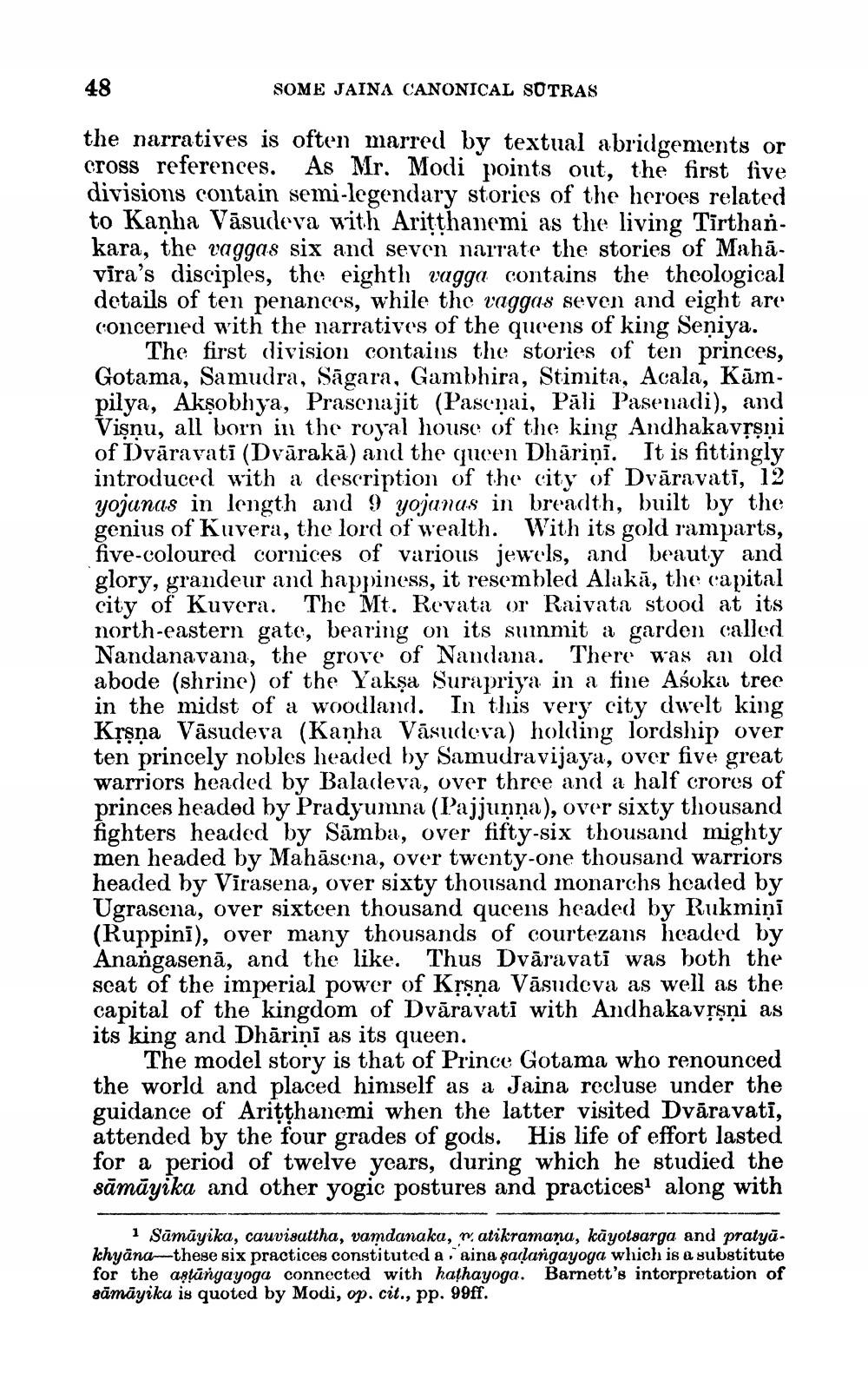________________
48
the narratives is often marred by textual abridgements or cross references. As Mr. Modi points out, the first five divisions contain semi-legendary stories of the heroes related to Kanha Vasudeva with Ariṭṭhanemi as the living Tirthankara, the vaggas six and seven narrate the stories of Mahavira's disciples, the eighth vagga contains the theological details of ten penances, while the vaggas seven and eight are concerned with the narratives of the queens of king Seniya.
The first division contains the stories of ten princes, Gotama, Samudra, Sagara, Gambhira, Stimita, Acala, Kāmpilya, Akṣobhya, Prasenajit (Pasenai, Pali Pasenadi), and Visņu, all born in the royal house of the king Andhakavṛsni of Dvaravati (Dvārakā) and the queen Dharini. It is fittingly introduced with a description of the city of Dvaravati, 12 yojanas in length and 9 yojanas in breadth, built by the genius of Kuvera, the lord of wealth. With its gold ramparts, five-coloured cornices of various jewels, and beauty and glory, grandeur and happiness, it resembled Alaka, the capital city of Kuvera. The Mt. Revata or Raivata stood at its north-eastern gate, bearing on its summit a garden called Nandanavana, the grove of Nandana. There was an old abode (shrine) of the Yaksa Surapriya in a fine Aśoka tree in the midst of a woodland. In this very city dwelt king Kṛṣṇa Vasudeva (Kanha Vasudeva) holding lordship over ten princely nobles headed by Samudravijaya, over five great warriors headed by Baladeva, over three and a half crores of princes headed by Pradyumna (Pajjuņņa), over sixty thousand fighters headed by Samba, over fifty-six thousand mighty men headed by Mahasena, over twenty-one thousand warriors headed by Virasena, over sixty thousand monarchs headed by Ugrasena, over sixteen thousand queens headed by Rukmini (Ruppini), over many thousands of courtezans headed by Anangasenā, and the like. Thus Dvaravati was both the seat of the imperial power of Kṛṣṇa Vasudeva as well as the capital of the kingdom of Dvaravati with Andhakavṛṣṇi as its king and Dhariņi as its queen.
The model story is that of Prince Gotama who renounced the world and placed himself as a Jaina recluse under the guidance of Ariṭṭhanemi when the latter visited Dvaravati, attended by the four grades of gods. His life of effort lasted for a period of twelve years, during which he studied the sāmāyika and other yogic postures and practices1 along with
SOME JAINA CANONICAL SUTRAS
1 Sāmāyika, cauvisattha, vamdanaka, natikramana, kāyotsarga and pratyākhyāna these six practices constituted a aina sadangayoga which is a substitute for the astangayoga connected with hathayoga. Barnett's interpretation of sāmāyika is quoted by Modi, op. cit., pp. 99ff.




